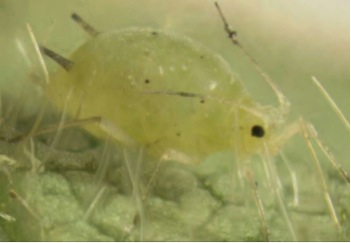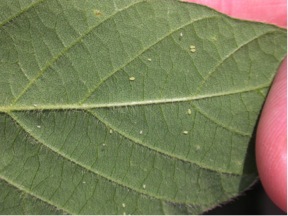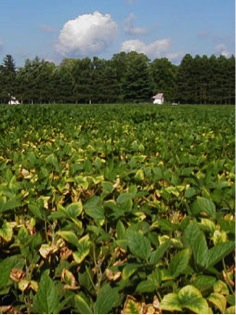Have you ever seen a soybean field where aphids infested some areas more than others? There’s a good chance the pattern might follow potassium (K) availability. Research conducted around ten years ago in Wisconsin and Michigan studied this phenomenon in detail.
It turns out that aphids depend heavily on nitrogen (N) nutrition for the amino acids in the plant sap on which they feed. To the aphid, amino acids are essential nutrients. They find it hard to get what they need by breaking down plant proteins. Plants normally synthesize proteins from amino acids, and K is involved in catalyzing those synthetic processes. When K runs short, amino acids accumulate in plant tissue, particularly in the phloem sap. So a K-deficient plant provides better nourishment to aphids than a healthy one.

Close-up photo of an individual aphid (Aphis glycines Matsumura). Photo by Claudio Gratton.

Aphid infestation on a soybean leaf.
Potassium, of course, isn’t the only factor controlling aphid infestations. Adequate K levels don’t always prevent aphid infestations, and sometimes you might be seeing K deficiency symptoms in soybeans without aphids.

Soybean leaves showing symptoms of K deficiency.
When infestations occur, however, you might find the patterns a useful guide to sampling soils or plants to determine the zones of K deficiency in your fields. In the Wisconsin and Michigan research programs, most of the associations of K deficiency with aphids occurred at soil test K levels below 60 ppm. At such low K levels, K application almost always increases yield, regardless of aphids. From a practical standpoint, this research demonstrates that managing K nutrition forms part of an integrated pest management plan for soybeans.
For more information, see the Better Crops with Plant Food (2010) article By Tom Bruulsema, Christina DiFonzo, and Claudio Gratton on How Potassium Nutrition Can Suppress Soybean Aphids.